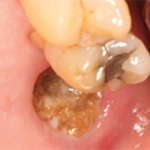 Treatment Considerations for the Worldwide Osteoporosis Pandemic
Treatment Considerations for the Worldwide Osteoporosis Pandemic
SINGAPORE—In many countries around the world, societies are dealing with the effects of an aging population. This trend has been particularly pronounced in Asia, where the phenomenon even has a striking label: the Silver Tsunami.
At the 26th Congress of the Asia Pacific League of Associations for Rheumatology (APLAR) in August 2024, Kenneth Saag, MD, MSc, professor of medicine, Jane Knight Lowe Endowed Chair in the Department of Medicine, division director of Clinical Immunology and Rheumatology, the University of Alabama at Birmingham, gave a talk focused on critical challenges and solutions in the field of osteoporosis management, a timely and important topic related to this larger theme.
Bisphosphonate Use
Dr. Saag began his lecture with several items of particular interest to the audience at this conference, which focused on issues relevant to patients and providers in the Asia-Pacific region. He noted that, by 2050, about 50% of all hip fractures worldwide are expected to occur in Asia—particularly in China.1 Additionally, Asian patients appear to be at an increased risk of atypical femur fractures—a rare, but significant, potential side effect of bisphosphonate medications—than non-Asian individuals.2
This combination of circumstances poses a challenge for clinicians in the Asia-Pacific region, as well as for those caring for patients of Asian descent in all countries. The situation further demonstrates the importance of balancing the risks and benefits of treatments for osteoporosis, something rheumatologists are quite familiar with in recent years.
Drug Holidays
Long-term bisphosphonate use has been associated with atypical femur fractures and osteonecrosis of the jaw. Thus, the concept of drug holidays emerged with the goal of reducing the risk of insufficiency fractures while sustaining the durable, long-term treatment effects of preventing fragility fractures.
The National Osteoporosis Foundation has recommended a comprehensive risk assessment after three to five years of bisphosphonate treatment. The assessment should focus on intercurrent fractures, chronic diseases and medications, height measurements, vertebral imaging and bone mineral density testing to evaluate if a drug holiday is reasonable.3 In this same vein, the American Society for Bone and Mineral Research recommends initiating a drug holiday after three years of intravenous (IV) bisphosphonate use or five years of oral bisphosphonate use in postmenopausal patients with low fracture risk and a T-score of more than -2.5 at the hip.4
Dr. Saag stressed that decisions about continuing or pausing therapy should be tailored to each individual patient. Clinicians should engage in shared decision making with patients when it comes to such choices.


